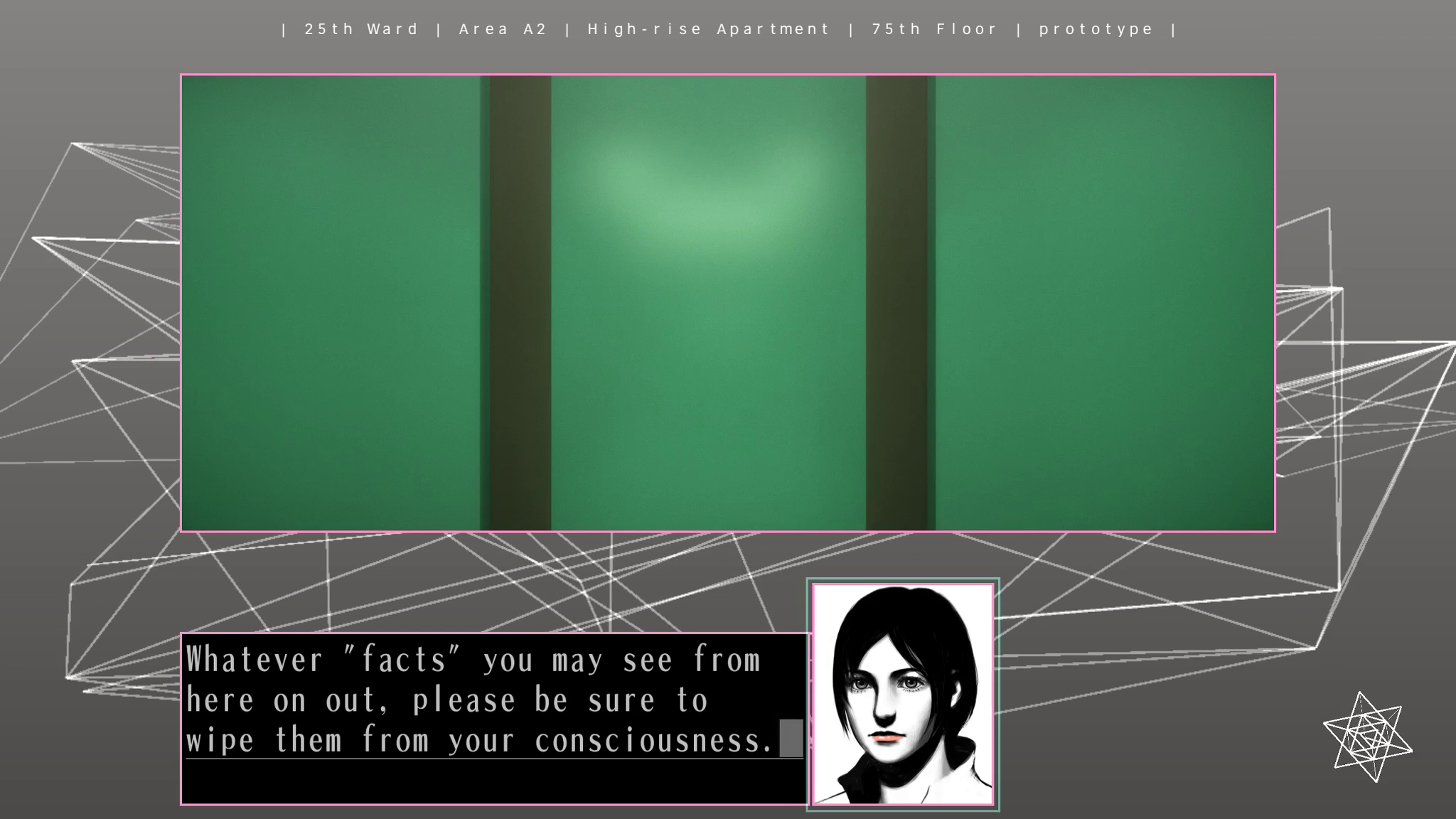
Ayame is similarly negative, though the characters who survived the Ayame Maspro are at least more proactive and uniformly sympathetic. Natsume Sakura remains active, though like Akira at the end of The Silver Case, bafflingly remains a member of the Ward 24 HC Unit despite having discovered their role as violent agents of the dictatorship that tortured her as a child, caused her father’s death, and killed many of her friends and coworkers. Like Sumio after his adventure in Flower, Sun, and Rain, Sakura now exists on a mystical, abstract level of existence after “LifeCut,” privy to occult “facts” that allow her to collaborate with criminals. She seems to have a liberatory role, but it is too undeveloped to be substantial.
In Correctness, Sakura appears in “prototype,” “new world order,” “digital man,” and the prequel, “white out.” In the first two, she illegally collaborates with Uehara in his secret mission to defeat the 25th Ward, guiding him into Bayside Towerland to investigate Milu’s alleged suicide, though whether she is aware of his aims is unclear. In “digital man,” Sakura collaborates with the escaped terrorist Sumio to investigate Kurumizawa, after which point she inexplicably disappears from the storyline. Though she implies she and Uehara will kill each other at some point, nothing comes of this. “White out” depicts her in 2003, when she continues to work with Akira and dates Kosaka. She remains liberated, asserting her independence against her boyfriend (whom she has left by 2005). Much like in Correctness overall, in “white out,” Sakura initially seems important but abruptly vanishes, in this case after Akira meets Shiroyabu (the character Suda is more invested in).

More interesting is Sakura’s appearance in “underground theater,” the first chapter of Matchmaker. Conducting their own secret investigation of Milu’s death, Tsuki and Osato discover a phone Sakura left in the room for them. When they call her, intending to trace the number and kill her, they are astonished to be unable to. This is because Tsuki and Osato, helpless patsies ensnared in the “truth” of the ward ideology though they are ruthless RA Bureau killers, exist at a much lower level of “facts” than the quasi-magical Sakura (which is also why she is able to track Kurumizawa).
Over the phone, Sakura cryptically describes the 25th Ward as a theatrical production, says “the star of the show” is Kamui (a point Shiroyabu repeats in “electride”), and ends by promising them, “KAMUI WILL KILL THE LIFE.” The scene implies Sakura is on Kamui’s side, taunting Tsuki and Osato. Alternatively, she is warning them what criminal power is going to do to destroy the police state they uphold. It might also be assumed she is undertaking her own investigation into the Postal Federation secret police force. However, Sakura is not involved any further, and despite her investigation never even interacts with Meru or, for that matter, with Tokio, whom she knows. Aside from a comment about the importance of killing the past, in The 25th Ward, there is no particular connection between Sakura and liberatory, transformative violence.
***